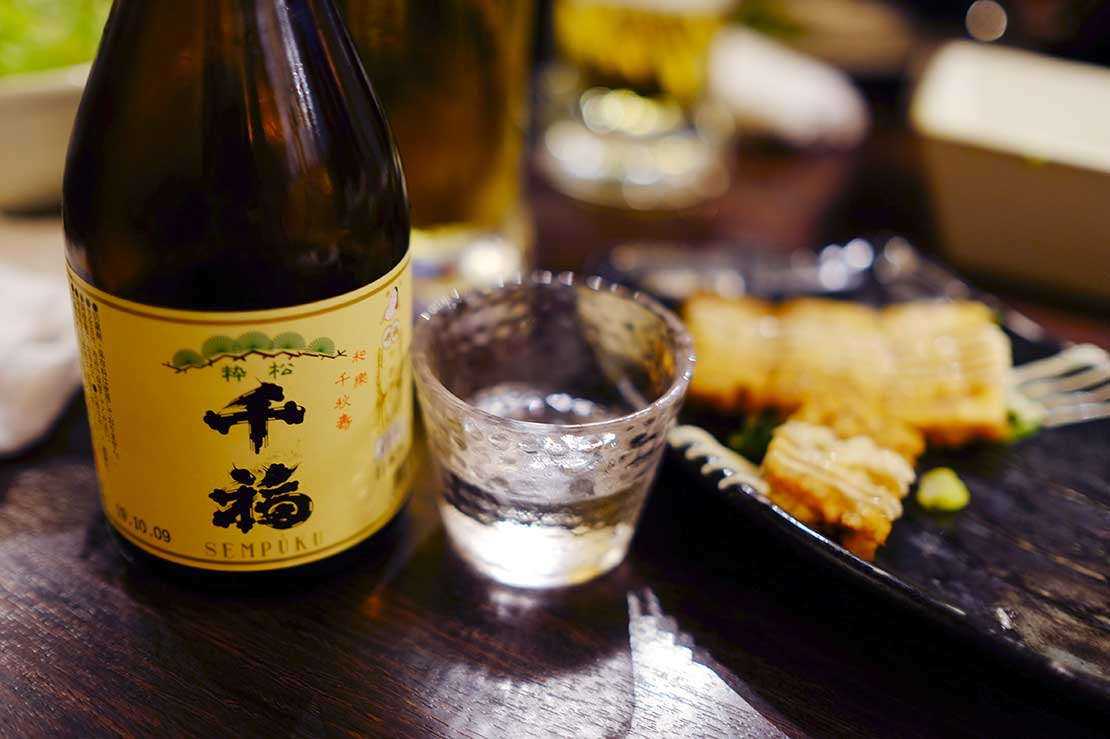[Photos: Kim Choong]
Love Japanese food? Want to get into Japanese national pride – saké, but don’t know how? Read on.
To pick up a bottle of saké is not difficult, to choose one that you really like perhaps requires many tastings. But some basic knowledge will open up a whole new world of saké enjoyment, adding another layer to your culinary journey.
In Japan, saké is enjoyed with friends or during special occasions like weddings and religious ceremonies. Recently, the Japanese brewed beverage has been growing fast internationally in popularity to be appreciated with meals. Unlike wine, most sakés taste delicate and do not have tannins, making it an easy option for pairings (doesn’t have to be Japanese food).
Here are a few things about saké to up your pairing game:
- Saké is not rice wine
That’s right, saké is a brewed beverage like beer. It doesn’t only go through fermentation, which makes wine. Rice wines are like mirin (Japan), tuak (Sarawak), sombai (Cambodia) or cheongju (Korea), which don’t go through a brewing process.
Unlike beer, saké has a unique process called “multiple parallel fermentation”, meaning conversions of starch to sugar and sugar to alcohol both happen at the same time. Saké is made from rice, water, koji mold (mold-innoculated rice) and at times, added distilled alcohol. Saké alcohol content is usually between 14% to 16% but legally it cannot be higher than 22%.
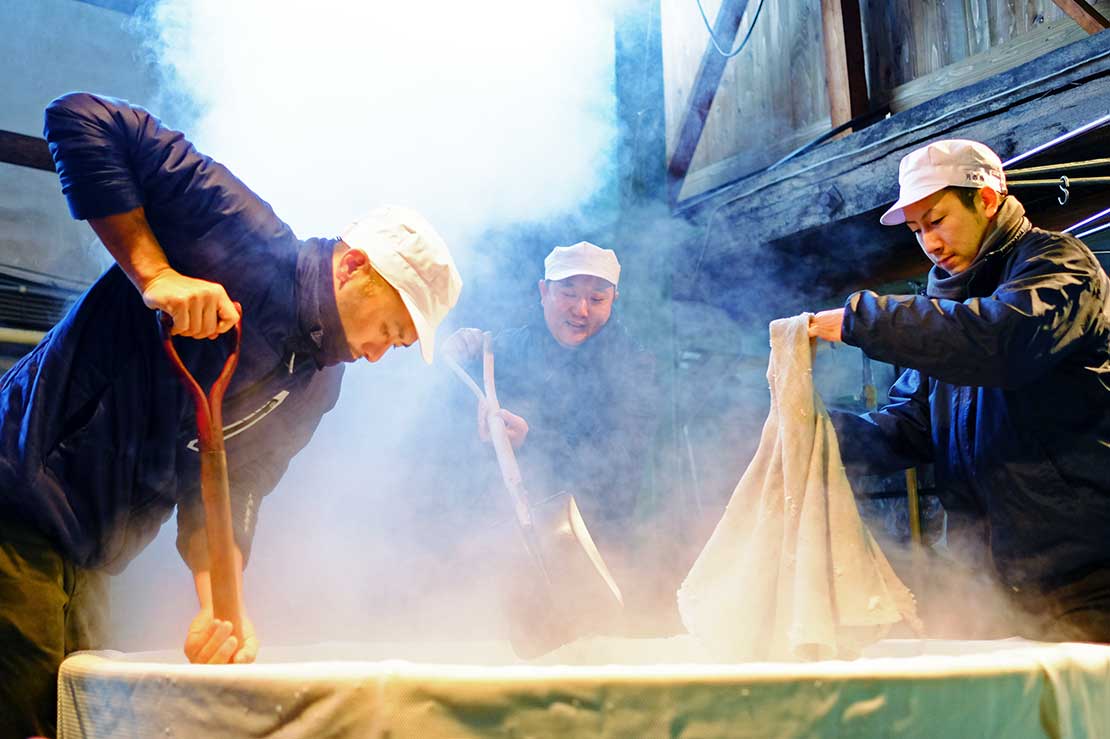
Saké brewing is a labour intensive craft and usually takes one month to brew a good quality saké.
- What are the types of saké?
In saké terms, the grades of saké are categorised as Futsu-shu at the lowest grade, Honjozo and Junmai one level up, then the most premium four being Ginjo and Junmai-Ginjo, Daiginjo and Junmai-Daiginjo. It may sound confusing but let’s break them down and all will make sense.
Futsu-shu is normal or table saké made from table rice. This type of saké constitutes 80% of all Japanese saké production. Anything above this grade is referred to as “Tokutei Meishoushu” (special designation saké or premium saké).
Premium sakés can be divided to two categories: with added distilled alcohol, or without. A huge amount of distilled alcohol can be added to cheap saké but only very little (3%-4%), if any, is added to premium saké to enhance the fragrance and flavour.
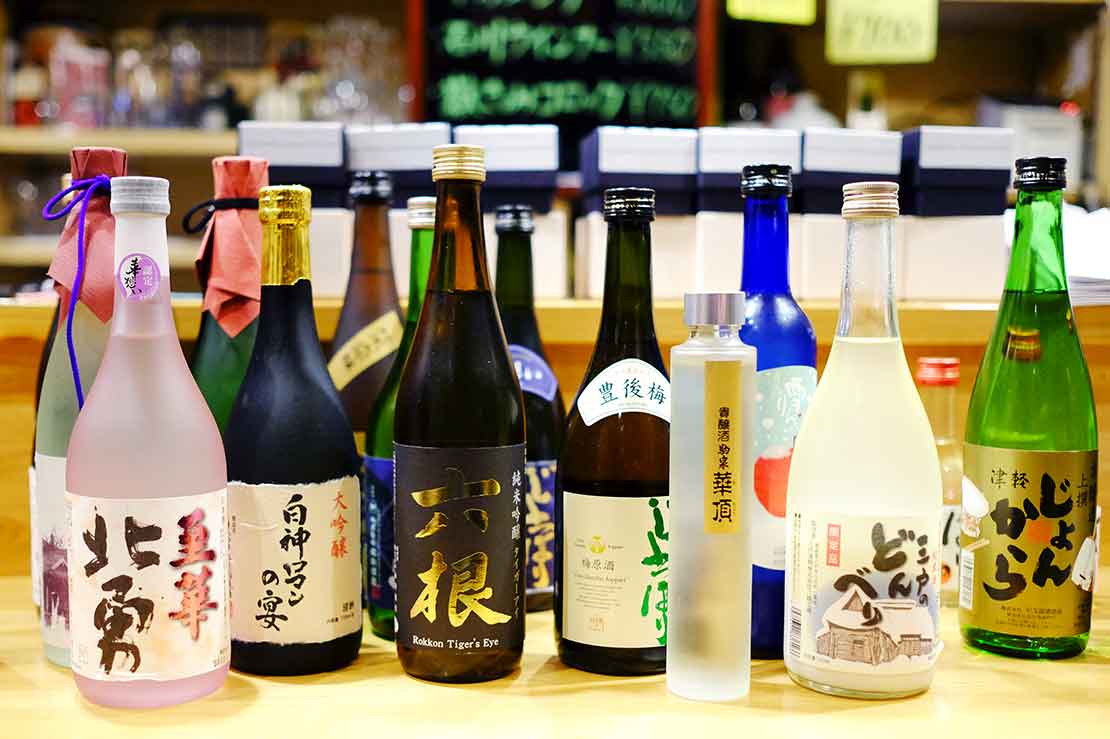 Premium sakés account for 20% of total saké production in Japan
Premium sakés account for 20% of total saké production in Japan
The three types with added distilled alcohol are Honjozo, Ginjo and Daiginjo; whereas the Junmai, Junmai-Ginjo and Junmai-Daiginjo with “Junmai” (pure rice) refers to saké brewed only with rice, water and koji. The difference between sakés with added distilled alcohol and none can be very subtle.
Lastly, the difference between the grades is their rice milling rate. Honjozo/Junmai is milled to at least 30%, Ginjo/Junmai-Ginjo at least 40% and Daiginjo/Junmai-Daiginjo at least 50%. Note that on bottle labels, it’s the opposite number that is shown for milling rate, e.g. 70% means the rice has been milled by 30%.
How to read saké label like a pro?
- What is milling rate? How does it affect the taste profile?
Saké can be made with any type of rice, but to make premium saké, Japanese saké rice yields better quality.
Saké rice is like wine grapes, they are not very tasty. Saké rice has unwanted components like proteins and fats on the outer layer, and only a small amount of starch in the centre. The more the rice is milled, the less unwanted components are used in the brew, hence, producing more elegant and cleaner flavour saké.
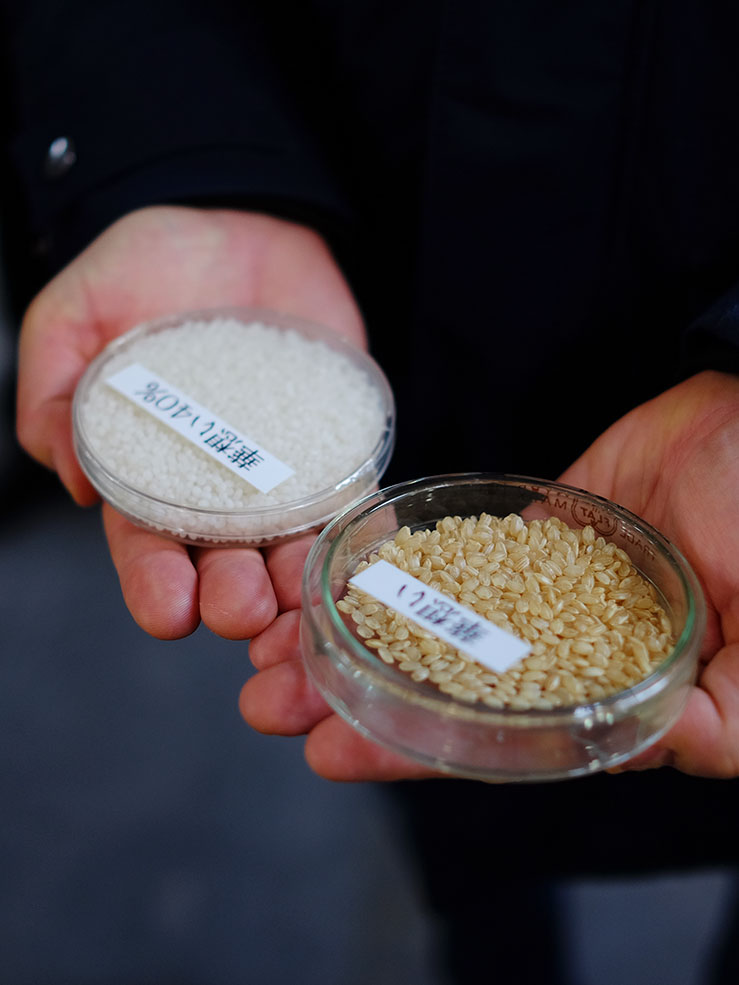
Saké rice before (right) and after milling (left)
- Does rice type influence saké flavour like grapes to wine?
Not always, that is because wines are a direct result from the quality of grapes whereas saké is a combination of the rice quality, milling rate, koji, production process and craftsmanship.
However, the different categories should give a basic guideline as to whether to expect floral and light saké or more umami and body.
The most popular saké rice is Yamada Nishiki from Hyogo followed by Okayama among 30 other popular types. Sake rice accounts for 1.8% of total rice grown in Japan in 2019.
There are no geographical restrictions as to where saké rice can be sourced from (unlike champagne) but some breweries are moving towards using local rice to create saké unique to their prefectures.
- Is more expensive better?
Generally, this saying is quite accurate because saké is priced according to what the brewers think it’s worth. It’s based on the quality of rice, milling rate, time spent and craftsmanship. The general rule is the more attention paid to the production process, the better the quality of the saké, but it doesn’t mean that the taste profile may be to your liking.
- Is saké better with age?
Saké is generally best consumed as soon as it’s purchased as brewers bottle their saké when they think it’s the best time to drink. If any ageing is required, the brewery would have done it before bottling, though this is changing as more breweries are experimenting with aging saké.
A bottle of saké is normally freshest within a year and one week once opened. This doesn’t mean you can’t let it sit longer, some meatier saké actually “opens up” more after exposing to oxidation. Experiment as you wish as saké is more forgiving than wine.
Store below 16 degree Celsius for slower oxidation.
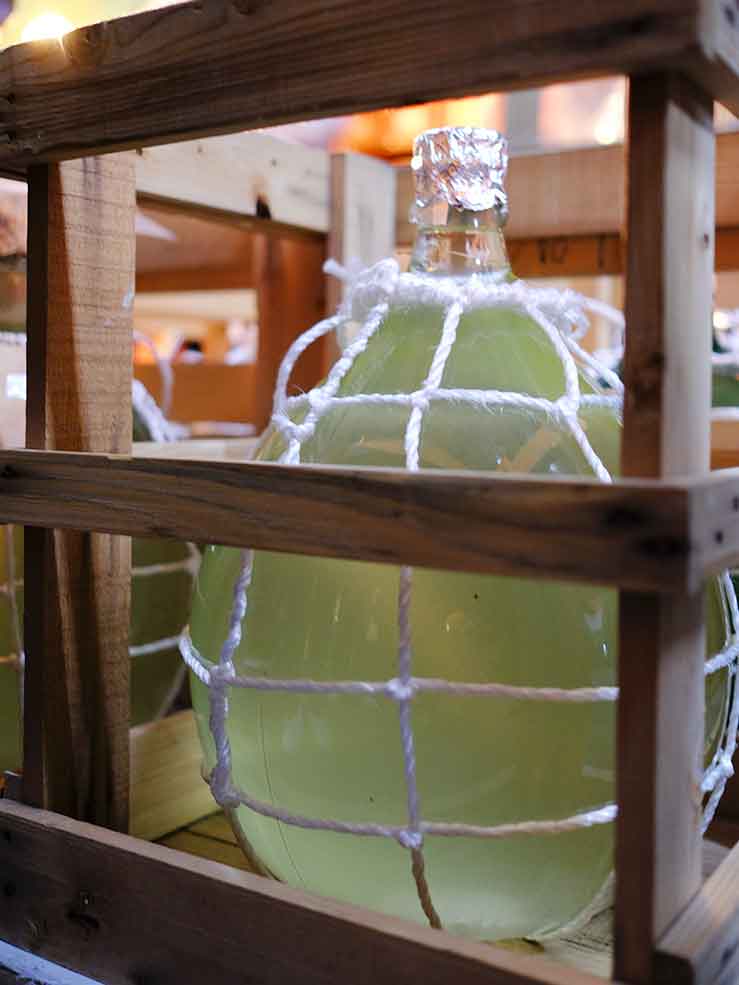
Saké aging in glass jars in the brewery
- What’s the date on saké label?
The date on a saké label refers to the bottling date, normally also the date of shipment from the brewery. There is no expiry date for saké and it is encouraged to be drank as soon as possible, recommended within a year, though some sakés can still age gracefully.
- Pasteurised and un-pasteurised
Pasteurised saké requires less care when it comes to storage, as long as it is not under direct light, it doesn’t have to be chilled. Un-pasteurised sake is the opposite, it has to be kept chilled.
- Chilled or warm?
Most sakés, especially the premium ones are best consumed slightly chilled because they are more delicate. “Cooking” them will take away their intended characters like the floral and fruity notes. However, there are exceptions that a sake can be enjoyable as well warm. The best ways to find out are to ask the restaurant it is served in, the shop where it is purchased, or experiment with it yourself at home.
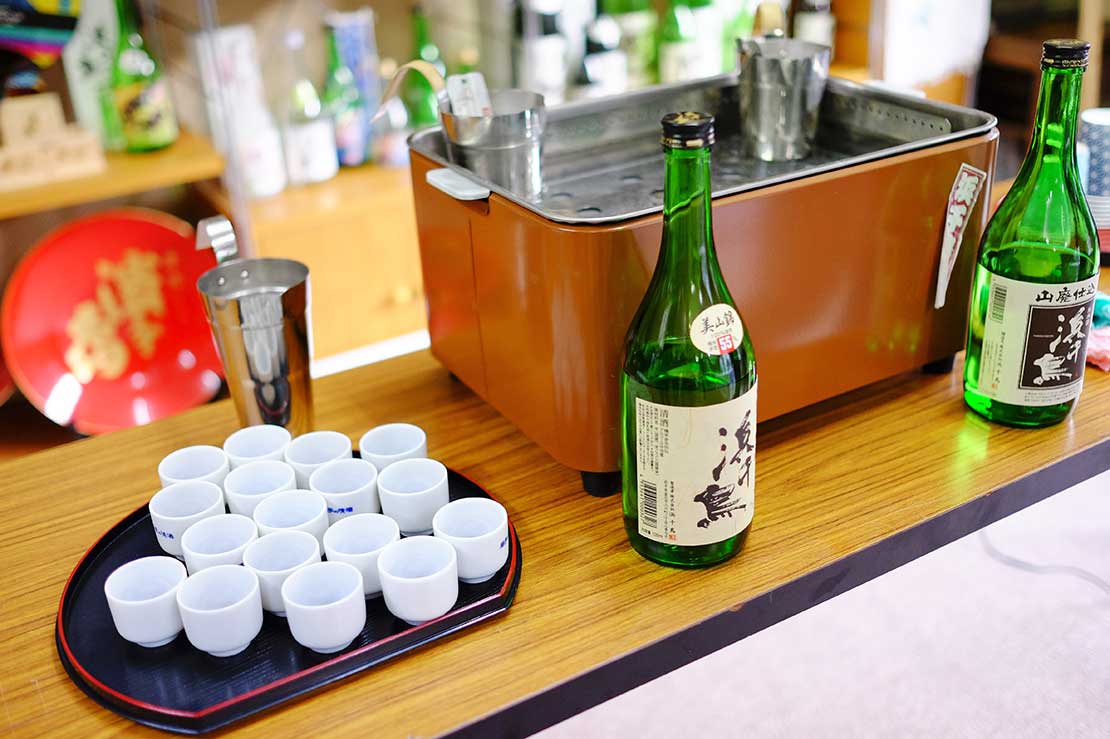
Some saké taste more umami when warmed up
- What glassware to use?
A white wine glass should do to nose and taste saké. However, the traditional Japanese saké stemless pottery drinkware will give a different dimension to the experience.
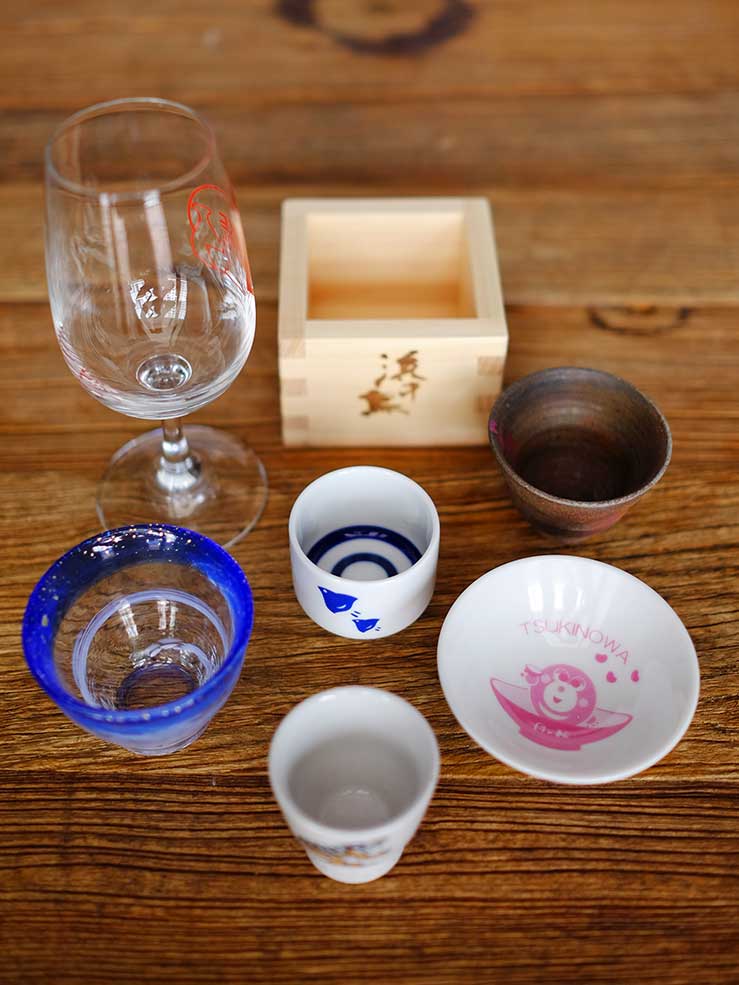
Drink saké from any of these vessels
A little bit of table manners: let others fill your glass and you do the same in return, unless otherwise communicated. However, this practice is not so strict anymore, so just have fun!
Now you are ready to pick up a bottle of saké to drink on its own or go with a meal. Remember, saké doesn’t have to be paired with Japanese food. Try it with you favourite local dish!
If you have any questions, please email editor@thirstmag.com.
---
We want to thank Japan Saké and Shochu Makers Association (JSS) for bringing us to the world of saké through visits to Aomori and Iwate prefectures.
The information above is based on the notes and manual provided by John Gauntner, a world leading saké expert. He is the Managing Editor and Co-Founder of Saké Today, and Editor to Saké Industry News. You can subscribe to the latter, a bi-monthly digital newsletter covering news from within the saké industry in Japan here.
